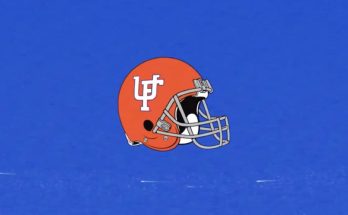As the 2024 college football season progresses and rosters continue to evolve, the transfer portal has become an integral part of college football’s landscape. Universities are actively navigating the opportunities and challenges presented by the portal, and this includes programs like the University of Alabama, which has seen a number of players enter the transfer portal since the conclusion of the previous season. Alabama has long been a dominant force in college football, with legendary head coach Nick Saban at the helm, a history of national championships, and a consistent reputation for developing top-tier talent. However, even the Crimson Tide is not immune to the shifting dynamics that the transfer portal has brought to the sport. The portal allows players to seek better opportunities, more playing time, or even a fresh start, and Alabama’s program has witnessed several athletes take that step.
As of the latest updates, multiple players from Alabama have entered the transfer portal, each with unique reasons for their decisions. For some, it is a desire to find a program where they can see more playing time. For others, it could be a combination of factors, including changes in coaching staff, depth chart competition, or personal circumstances. Regardless of the reasons, these moves are part of the modern college football landscape, where players have more autonomy than ever before in choosing where they want to continue their athletic careers.
One notable player who entered the portal early in the process was wide receiver Christian Leary. Leary, who had been with the Crimson Tide for two seasons, had shown flashes of potential, but he found himself buried on a depth chart that was stacked with elite talent. Leary’s decision to enter the portal came as no surprise, as he was competing for playing time with some of the most talented wideouts in the country. With the likes of Jermaine Burton, Isaiah Bond, and Ja’Corey Brooks leading the receiving corps, Leary likely saw the transfer portal as a pathway to an environment where he could make a greater impact. Alabama’s high expectations for its wide receivers, combined with their wealth of talent, likely made it challenging for Leary to carve out a consistent role on offense. His decision to look for opportunities elsewhere is indicative of the intense competition that exists within Alabama’s program, which often drives players to seek playing time in other settings.
Another player who made the decision to enter the transfer portal was running back Jamarion Miller. Miller, who had shown potential in limited opportunities with Alabama, found himself facing a crowded backfield that included Heisman Trophy winner Bryce Young’s top target, Jahmyr Gibbs, as well as other highly touted recruits. With competition for carries in Alabama’s run-heavy offense at an all-time high, Miller’s move to the transfer portal was driven by the prospect of getting more playing time. Players like Miller, who enter the portal, often do so in search of an offense where they can be the focal point of the ground game. Alabama’s ability to recruit top-tier running backs meant that Miller’s chances of earning consistent snaps were limited, and the transfer portal offered him the chance to find a program that would better suit his aspirations.
Quarterbacks have also been a focal point of transfer portal activity in Alabama. With the Crimson Tide consistently recruiting some of the best quarterbacks in the country, competition for the starting job is fierce. Alabama had a particularly intense quarterback battle ahead of the 2024 season, with several talented signal-callers vying for the starting role. One player who chose to enter the transfer portal was Jalen Milroe, a highly regarded dual-threat quarterback who had served as Bryce Young’s backup in 2023. Milroe, who had displayed flashes of talent during his limited playing time, ultimately decided to seek out a program where he could be the undisputed starter. Milroe’s decision to transfer was not unexpected, as Alabama’s depth chart at quarterback was stacked with talented young players, including Ty Simpson, who was seen as a future star for the program. The presence of highly touted freshman quarterbacks likely pushed Milroe to look for a place where he could be the centerpiece of the offense and gain invaluable starting experience.
Alongside Milroe, other quarterbacks from the Crimson Tide program entered the portal as well, seeking opportunities elsewhere in the hope of continuing their development and pursuing their goals of becoming starting quarterbacks. The increased competition in the quarterback room is a trend that has become all too familiar at Alabama, and the transfer portal offers players the chance to evaluate their options in search of the best fit for their playing style and career trajectory. For Alabama, the influx of elite recruits at quarterback positions only intensifies the pressure to perform, leading to the departure of players who may have once been seen as the next great Alabama quarterback but now find themselves in a situation where playing time and development are limited.
Beyond the offensive skill positions, Alabama has seen departures from players in other positions as well. The defensive side of the ball, in particular, has always been a major strength for the Crimson Tide, and that includes the defensive line and linebacker positions. As Alabama continues to recruit some of the best defensive players in the nation, competition for spots in the starting lineup is always fierce. Players like defensive lineman Braylen Ingram and linebacker Deontae Lawson chose to enter the transfer portal after realizing that their chances of playing regularly at Alabama were slim. Alabama has an embarrassment of riches on defense, and for some players, this means that their opportunities for consistent playing time are few and far between.
One of the interesting aspects of these transfers is how they highlight the challenges faced by players in high-profile programs. On the one hand, Alabama offers some of the best resources for player development, a storied tradition of success, and the chance to compete for national championships. On the other hand, the level of competition is incredibly high, and many players, particularly those at skill positions, may find themselves in a situation where they are not able to make an immediate impact. The transfer portal allows these players to find new homes where they can develop and showcase their abilities on the field, something that may have been more difficult to achieve at a program like Alabama, where success on the field often depends on the depth of talent.
For Alabama’s coaching staff, the departures of these players do create some turnover, but they also provide an opportunity to evaluate and adjust the roster. Head coach Nick Saban has always maintained that player development is a central tenet of his program, and the transfer portal gives him the ability to retool the roster to better fit the needs of the team. While losing players to the transfer portal is never ideal, it is also a part of the ever-evolving landscape of college football, where players have the agency to make decisions that are in their best interest.
Alabama, like many programs, has learned to adapt to this new reality, and while the program has lost some players to the portal, it has also gained talent from other schools. The influx of talent from other programs via the transfer portal is often seen as a way to quickly address needs and add depth to the roster. Alabama has successfully navigated the portal to bring in players who can make an immediate impact and further strengthen an already talented team. This back-and-forth dynamic of players leaving and arriving through the transfer portal will continue to shape college football in the years to come.
The players who have entered the transfer portal from Alabama represent a mix of underclassmen looking for more playing time, upperclassmen seeking a fresh start, and individuals whose situations simply didn’t align with the team’s direction. These transfers reflect the changing nature of college football, where roster management has become a more fluid process, and players have more freedom to chart their own course. While Alabama remains one of the most successful programs in the nation, the dynamics of the transfer portal will continue to affect teams across the country, forcing coaches to adapt and adjust to a new era of college football.



